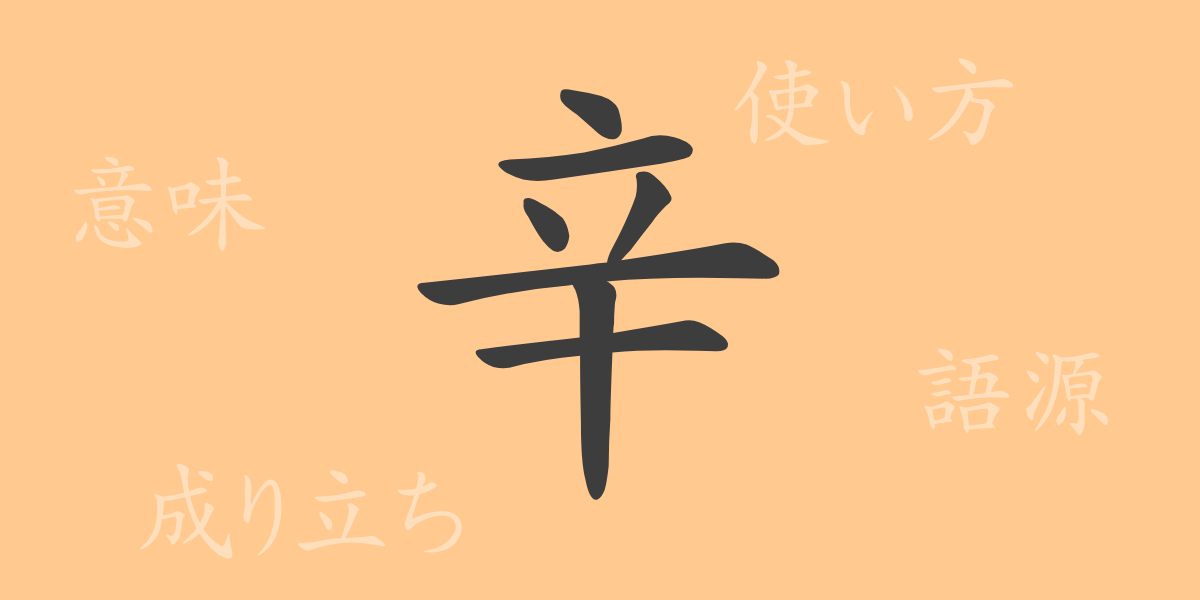Japanese culture is deeply intertwined with its characters, each bearing a shape and history that reflect cultural and philosophical underpinnings. Focusing on the commonly used Kanji ‘辛’ (しん), this article delves into its fascinating etymology, meanings, and usage. We explore its journey from origin to contemporary usage, including phrases and proverbs, revealing why this character resonates so deeply in Japanese life.
Origins of 辛 (しん)
The Kanji ‘辛’ evolved from ancient Chinese pictographs. Originally depicting a plant known for its spicy flavor, it has come to express the abstract concepts of pain and hardship over time. It also represents one of the ten celestial stems in Chinese culture, used to denote time, further adding to its usage in communicating difficult or intense experiences.
Meaning and Usage of 辛
‘辛’ is predominantly used to describe the sharp or painful sensations, both physically as in ‘spicy’, and emotionally as in ‘harsh’ or ‘bitter’. It finds use in astrological contexts too, reflecting its versatile nature across various facets of language and culture.
Readings, Stroke Count, and Radical of 辛
The character ‘辛’ plays a crucial role in Japanese orthography, enriched by its distinct form and meaning.
- Readings: On’yomi as ‘シン’, Kun’yomi include ‘からい’ (spicy), ‘つらい’ (painful).
- Stroke Count: 7 strokes.
- Radical: ‘辛’ itself serves as its own radical, categorized under 辛部 (しんぶ).
Phrases, Idioms, and Proverbs Involving 辛
The character ‘辛’ appears in many Japanese idioms and proverbs, each carrying unique meanings and cultural significance. Here are some examples:
- 辛苦 (しんく): Signifies hardship or toil.
- 辛抱 (しんぼう): Denotes patience or endurance.
- 辛勝 (しんしょう): A narrow victory, often achieved with great difficulty.
- 辛辣 (しんらつ): Describes a critique that is severe and incisive.
- 十人十色 (じゅうにんといろ): A proverb meaning ‘to each their own’, reflects personal preferences and individual differences, subtly incorporating the celestial stem ‘辛’.
Conclusion on 辛
The Kanji ‘辛’ encompasses a range from gastronomic piquancy to emotional and temporal expressions, illustrating its extensive applicability. Its presence in everyday speech and literature underscores its significance in Japanese culture, symbolizing the richness of the Japanese language. Exploring ‘辛’ offers a profound insight into the nuances of Japanese expressions and deepens our understanding of the language’s complexity.

























